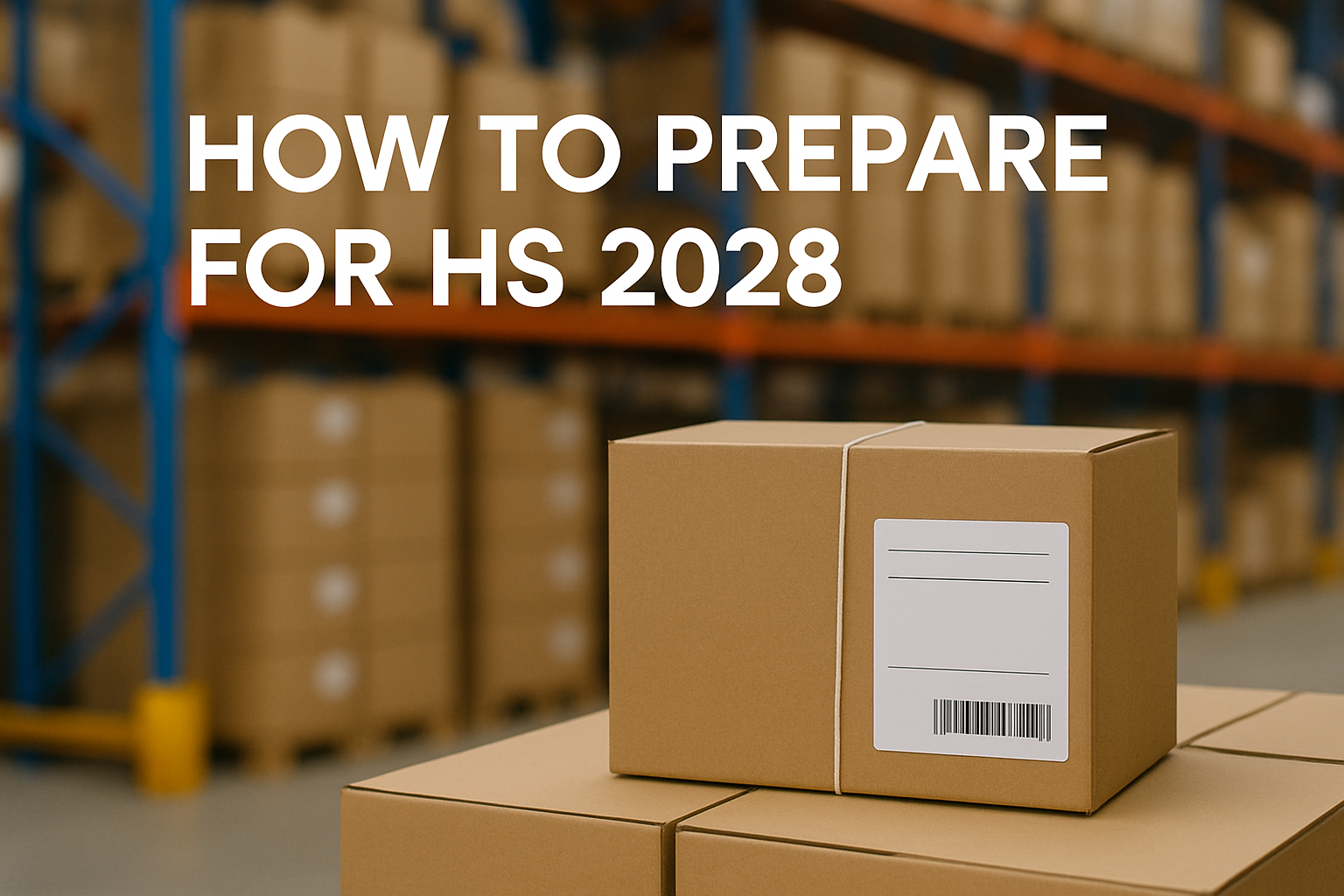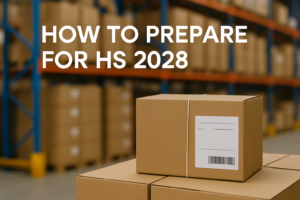HS 2028: Your guide to the next harmonised system update
Topics

It may seem a while off yet, but the wheels are already in motion to make changes to the harmonised system, the 8th edition, due to come into effect in January 2028. Every five years, the World Customs Organisation (WCO) updates HS codes to reflect emerging tech, trade trends and global regulations and the next big update will soon be on its way. This time around, there are provisionally 299 sets of amendments which will shape classifications for industries like electronics, pharmaceuticals and green tech.
 Whilst there’s a way to go yet, it’s worth knowing what will likely come up and to be aware of the timeline. Here, we look at what has been agreed so far and what we can expect.
Whilst there’s a way to go yet, it’s worth knowing what will likely come up and to be aware of the timeline. Here, we look at what has been agreed so far and what we can expect.
HS 2028: What’s changing?
In March 2025, the WCO’s Harmonised System Committee wrapped up six years of intense technical work, provisionally adopting HS 2028 with 299 sets of amendments. That’s a leaner update compared to the 351 amendments in HS 2022. Despite having fewer amendments than its predecessor, these updates are expected to be far from trivial. We can expect significant impacts across sectors like electronics, pharmaceuticals, green technology and products with dual-use applications.
Here’s the timeline you need to know:
June 2025: The WCO Council will review and adopt the amendments as an Article 16 Recommendation. This is the final hurdle for formal approval.
July–December 2025: HS Contracting Parties have their say with six months to raise objections (though major changes are unlikely).
January 2026: The final HS 2028 Nomenclature is published – your first full view of what’s changing.
January 1 2028: HS 2028 comes into effect globally and your classifications must align.
Why is it important to keep on top of upcoming tariff code changes?
Misclassification is costly – causing delays, penalties and shipment delays. With HS 2028 set to introduce new codes and adjust existing ones, accurate classification will be as critical as ever.
Roll-out can also cause some challenges that are worth preparing for. Namely some countries implement the new codes at varying speeds, creating headaches for global supply chains. With HS 2028, you’ll need to juggle varying implementation timelines while ensuring your codes are accurate. Plus, for those businesses managing large product catalogues, reclassifying thousands of items manually is a daunting task, one that can be relieved by the use of a digital classification platform like TariffTel.
By preparing now, you can optimise duties, streamline compliance and ensure you keep trade flowing smoothly.
How to prepare for HS 2028 rollout
This is your opportunity to get ahead and prepare your business for the upcoming changes.
 Audit early: Get ahead by reviewing your product classification codes now. There’s no need to drown in spreadsheets and risk error, we can support you with your audit with either a one-off review of a sample of products, or a full audit – get in touch for details
Audit early: Get ahead by reviewing your product classification codes now. There’s no need to drown in spreadsheets and risk error, we can support you with your audit with either a one-off review of a sample of products, or a full audit – get in touch for details
Stay informed: Keep an eye on WCO announcements from June 2025 onwards. The WCO’s correlation tables mapping HS 2022 to HS 2028 are a worthy read
Automate: Manual reclassification puts a huge burden on businesses. TariffTel’s platform ensures your classifications are always current, accurate and compliant
Train your team: Prep your teams now – internal workshops and quick training sessions keep everyone on the same page
Maximise duty savings: New codes can mean new savings. Look out for tariff exclusions or free trade agreement perks. Accurate classifications can save on duty costs
HS 2028 might seem daunting, but we’re here to help. Our digital classification platform is designed to keep track of changing codes and keep you automatically updated (and compliant) the minute they are released. No more spreadsheet chaos. Whether it’s several hundred products or ten thousand, our platform can do the hard work to guarantee compliance and accuracy.
